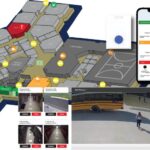TORRANCE, Calif. – Campus Safety Magazine announces the results of its Post Virginia Tech study.
More than 400 campus safety professionals from around the nation participated in the survey that was designed to determine how campuses have responded to the April 16, 2007 tragedy in which a deranged student shot and killed 32 students and teachers.
Some of the study’s findings include:
- 64 percent of respondents stated there is now greater attention and respect paid to campus safety and security issues by campus police/security, IT, facilities, administration, faculty, students, parents, patients, other department heads and outside first responders. Twenty six percent said it depends on the stakeholder.
- Since April 16, 2007, 66 percent of the respondent institutions have revised their emergency plans, and 22 percent are working on them
- 41 percent replied that the amount of money available to spend on campus safety had increased since the Virginia Tech incident
- 54 percent of respondents said their campuses have somewhat improved the quality of mental health services for students and faculty
- 57 percent said their campuses have somewhat improved the way information is shared about at risk students, staff and faculty, and 19 percent have significantly improved how information is shared
- The following percentage of institutions have purchased since April 2007 or will purchase the following types of equipment or systems within the next six months:
- 73 percent, mass notification
- 55 percent, security camera systems
- 44 percent, access control/key management systems
- 40 percent, emergency communications/two-way radios
- 28 percent, patrol vehicles
- 27 percent, weapons
“All of us at CS would like to thank those who participated in the study,” says Robin Hattersley Gray, executive editor of the publication. “This information is an excellent gauge as to how far campus safety and security has come in only a year.”
To review the complete report, please read Virginia Tech 1 Year Later: How Campuses Have Responded. Click here for the PDF version of the article that includes charts.












